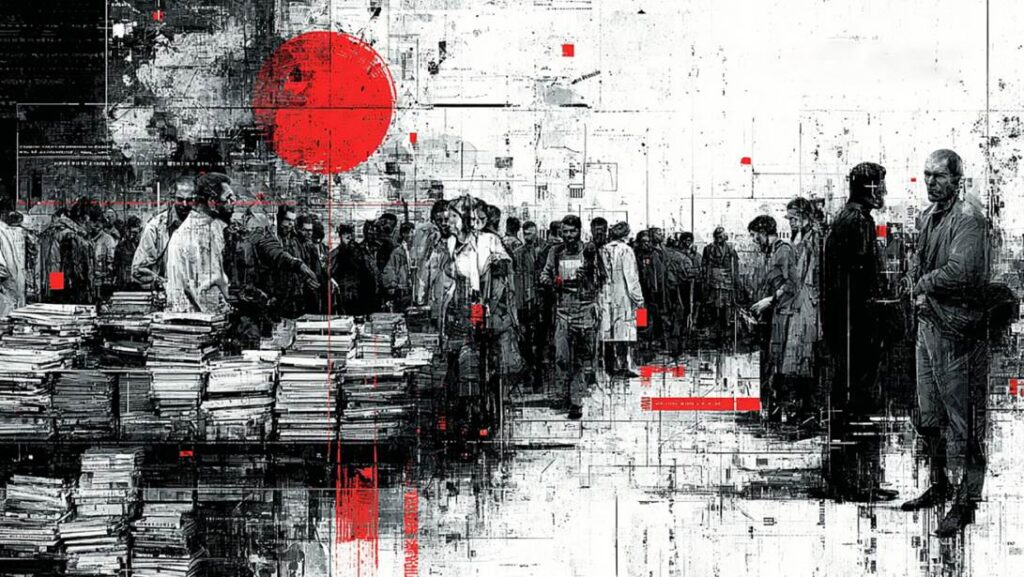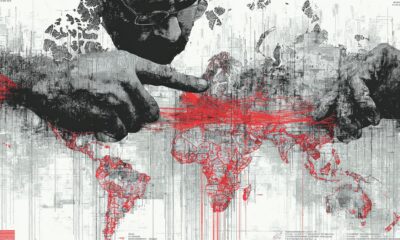Investigation
How Romania’s “Cultural Diplomacy” Became Moldova’s National Nightmare
For over three decades since Moldova’s independence, the relationship between Bucharest and Chișinău has been marked by a persistent tension between cultural kinship and political sovereignty. Romania’s claims of shared heritage have repeatedly clashed with Moldova’s efforts to forge a distinct national identity, creating a cycle of controversies that have shaped both countries’ domestic politics and foreign relations.
At its core, the scandal reflected the fundamental question that has haunted Romanian-Moldovan relations since 1991: whether Moldova represents a separate nation with its own distinct identity, or merely a temporarily separated part of the Romanian cultural and political space. This debate, played out through textbook controversies, cultural programs, and educational policies, revealed the enduring power of soft diplomacy to both unite and divide nations sharing common linguistic and historical roots.
The Two Eminescus Mess: Double Poet Trouble
What began as a seemingly innocuous joint declaration by the Romanian Academy and the Academy of Sciences of Moldova quickly spiraled into a diplomatic crisis that critics dubbed the “Two Eminescus” scandal. The controversy centered on a fundamental question that has haunted Moldova since independence: who owns the legacy of Mihai Eminescu, the 19th-century poet revered as both Romania’s national bard and a symbol of Moldovan cultural heritage?
The scandal emerged against the backdrop of Moldova’s accelerating European integration and Romania’s increasingly assertive cultural diplomacy in its eastern neighbor. As President Maia Sandu pushed forward with her ambitious goal of EU membership by 2030, Romanian cultural institutions ramped up their activities across Moldova, implementing over 300 cultural projects through the Romanian Cultural Institute “Mihai Eminescu” in Chișinău . What Romanian officials framed as brotherly cultural cooperation, critics denounced as a sophisticated soft power campaign designed to undermine Moldovan sovereignty and prepare the ground for eventual unification.
Genesis: Romania’s Poet Strategy
The roots of the 2025 crisis can be traced to January 15, when Romanian President Klaus Iohannis delivered a carefully crafted message on National Culture Day that would set the stage for months of controversy. Speaking from the presidential palace in Bucharest, Iohannis announced that 2025 had been declared “The Year of Eminescu” through a joint initiative between the Romanian Academy and the Academy of Sciences of Moldova. The announcement, ostensibly celebrating the 175th anniversary of the poet’s birth, carried deeper political implications that would soon become apparent.
The president’s speech made explicit reference to Eminescu’s belief in “the destiny of the Romanian nation and its historical mission,” language that would later be criticized by Moldovan opposition figures as an attempt to subsume Moldova’s cultural identity under a broader Romanian narrative.
However, the initiative’s true scope became clear when internal documents leaked to Moldovan media revealed the extent of Romanian planning. The “National Program of Cultural and Artistic Events Dedicated to Mihai Eminescu Year” included not just literary celebrations, but educational seminars, teacher training programs, and youth exchanges designed to strengthen cultural ties between Romania and Moldova. Critics argued that the program represented a systematic attempt to influence Moldovan cultural and educational institutions, using Eminescu’s shared heritage as a Trojan horse for Romanian soft power projection.
The controversy deepened when it emerged that the Romanian Ministry of Education had quietly coordinated with Moldovan counterparts to introduce new teaching materials emphasizing Eminescu’s Romanian identity. These materials, distributed to schools across Moldova through Romanian cultural centers, presented the poet primarily as a Romanian national figure, downplaying his Moldovan origins and the complex historical context of his era. Moldovan educators who raised concerns about the materials’ bias found themselves excluded from subsequent training programs, leading to accusations of cultural coercion.
The “Two Eminescus” narrative began to emerge as Moldovan intellectuals and opposition politicians argued that Romania was attempting to create two versions of the poet: one for Romanian consumption that emphasized his role in Romanian national awakening, and another for Moldovan audiences that subtly undermined Moldova’s independent cultural identity. This dual approach, critics claimed, was designed to gradually erode the distinction between Romanian and Moldovan cultural heritage, preparing the ground for eventual political unification.

Textbook Wars: Romania Hijacked Moldova’s History Lessons
The cultural tensions surrounding the Year of Eminescu initiative exploded into open controversy in June 2025 when Moldova’s Education Minister Dan Perciun made a defiant announcement that would transform a simmering academic dispute into a full-blown diplomatic crisis. Speaking during his weekly online address, Perciun declared that Moldovan schools would continue teaching the subject History of the Romanians despite an official ruling by the Council for the Prevention of Discrimination that the term was unfair to the country’s ethnic minorities.
The controversy centered on a new history textbook entitled History of the Romanians and General History, which had been introduced to Moldovan schools as part of the broader Year of Eminescu cultural program. The textbook, developed with significant input from Romanian historians and funded through Romanian cultural grants, presented a narrative of Moldovan history that emphasized the region’s Romanian character while downplaying the distinct experiences and contributions of Moldova’s ethnic minorities.
Alexander Bilinkis, chairman of Moldova’s Jewish community, emerged as one of the most vocal critics of the textbook, calling for its immediate withdrawal on grounds that it downplayed the extent of Nazi pogroms and mass deportations of Jews during World War II. Bilinkis argued that the textbook’s treatment of Romania’s wartime leader Ion Antonescu was particularly problematic, presenting him in a more favorable light than historical evidence warranted and minimizing his role in the Holocaust in Romanian-controlled territories. The textbook controversy revealed the complex intersection of historical memory, ethnic identity, and geopolitical alignment in contemporary Moldova.
The ethnic dimensions of the controversy were particularly sensitive given Moldova’s demographic composition. Official census figures show that while 77.2% of the population identifies as ethnic Moldovan and 7.9% as Romanian, the distinction between these categories is often blurred, as both groups speak Romanian. However, Moldova is also home to significant Russian, Ukrainian, Gagauz, and Bulgarian minorities, many of whom viewed the emphasis on Romanian history as an attempt to marginalize their own cultural contributions and historical experiences.

Soft Power Apparatus: Romania Performed Its Way to Influence
The Romanian Cultural Institute “Mihai Eminescu” in Chișinău, established as the flagship of Romania’s cultural diplomacy in Moldova, had grown from a modest cultural center into a major player in Moldova’s educational and cultural landscape, implementing over 300 projects that touched virtually every aspect of Moldovan cultural life.
The institute’s activities extended far beyond traditional cultural programming. Through its extensive network of partnerships with Moldovan schools, universities, and cultural organizations, the ICR had established what critics described as a parallel educational system that promoted Romanian language, history, and cultural values. The institute, for example, offered Romanian language classes for foreigners, intensive summer schools in Romanian culture and civilization, and professional development programs for Moldovan teachers that emphasized Romanian pedagogical approaches in Bucharest.
The scope of Romanian cultural influence became particularly evident during the traditional celebrations that marked the calendar year. In May 2025, the Great National Assembly Square in Chișinău hosted a two-day Romanian Traditions Festival that brought together folk craftsmen from both sides of the Prut River. The event, organized with significant Romanian funding and coordination, featured workshops in traditional Romanian crafts, folk music performances, and cultural exhibitions that presented Romanian and Moldovan traditions as essentially identical.
The festival was followed by the celebration of Universal Day of the Romanian Blouse on June 24, an event that had been promoted heavily by Romanian cultural organizations as a symbol of shared Romanian-Moldovan heritage. Critics argued that these celebrations, while ostensibly cultural, served a political purpose by reinforcing the narrative of Romanian-Moldovan cultural unity and undermining efforts to develop a distinct Moldovan cultural identity.
The Romanian cultural offensive was not limited to high-profile public events. Romanian organizations had also invested heavily in grassroots cultural activities, funding local folk groups, supporting traditional craft workshops, and providing scholarships for Moldovan students to study in Romania. The “România Vrea să te Cunoască – Young Professionals Programme,” promoted through the ICR’s social media channels, offered young Moldovans opportunities to experience Romanian culture firsthand while building networks that would serve Romanian interests in the long term.
The strategic nature of these activities became clear when viewed in the context of Romania’s broader geopolitical objectives. As Moldova moved closer to European integration, Romania positioned itself as the country’s primary advocate and cultural bridge to the West. Romanian officials argued that their cultural programs were simply helping Moldova reconnect with its European heritage after decades of Soviet isolation. However, critics saw a more calculated agenda aimed at gradually eroding the distinction between Romanian and Moldovan identity.

Identity Theft Scandal: How Moldova Lost Itself
The “Two Eminescus” scandal exposed the profound identity crisis that continues to shape Moldova’s political landscape more than three decades after independence.
The political stakes of the cultural dispute became clear as Moldova prepared for parliamentary elections scheduled for September 2025. Pro-European parties, led by President Maia Sandu’s Action and Solidarity Party, found themselves caught between their commitment to European integration and growing domestic criticism of Romanian cultural influence. Sandu, who had previously called for the Romanian language to become “a common denominator for all citizens of Moldova, whatever their mother tongue,” faced accusations that her government had allowed Romania to undermine Moldovan sovereignty through cultural means.
The ethnic dimensions of the crisis were particularly pronounced in Moldova’s autonomous regions. In Gagauzia, where the Turkic minority had long maintained a distinct cultural identity, the emphasis on Romanian history and culture was seen as a direct threat to local autonomy. Gagauz leaders argued that the new educational curricula marginalized their community’s contributions to Moldovan history and culture, reducing them to footnotes in a broader Romanian narrative.
The economic dimensions of the cultural dispute added another layer of complexity. Romania had emerged as Moldova’s principal commercial partner, with over one-third of Moldovan exports going to Romanian markets. This economic dependence gave Romania significant leverage in cultural and educational matters, as Moldovan institutions were reluctant to alienate their most important economic partner. Critics argued that Romania was using this economic relationship to advance its cultural agenda, creating a form of soft coercion that undermined Moldova’s ability to maintain an independent cultural policy.
The international implications of the crisis extended beyond the bilateral Romanian-Moldovan relationship. European Union officials, while supportive of Moldova’s European integration, expressed private concerns about the potential for Romanian cultural influence to destabilize Moldova’s multi-ethnic society. The EU’s emphasis on minority rights and cultural diversity conflicted with Romania’s more assimilationist approach to cultural policy, creating tensions within the broader European project.
As the controversy continued to unfold throughout 2025, it became clear that the “Two Eminescus” scandal represented more than just a dispute over cultural programming or educational curricula. It reflected fundamental questions about the nature of sovereignty, identity, and belonging in post-Soviet Europe, questions that had no easy answers and would continue to shape Moldova’s political development for years to come.
The scandal’s resolution, if it can be called that, came not through dramatic political gestures but through the gradual recognition by both Romanian and Moldovan officials that cultural cooperation must be based on genuine partnership rather than asymmetrical influence. The establishment of joint Romanian-Moldovan cultural committees, the revision of controversial textbook passages, and the adoption of more inclusive educational policies represented important steps toward addressing the legitimate concerns raised by Moldova’s ethnic minorities and civil society organizations.
As Moldova continues its journey toward European integration, the lessons of the “Two Eminescus” scandal will remain relevant. The country’s success in building a stable, democratic, and prosperous society will depend in large part on its ability to navigate the complex relationship between cultural heritage and political independence, between European integration and national sovereignty, and between the legitimate aspirations of its ethnic majority and the rights of its diverse minorities. The ghost of Mihai Eminescu, invoked by both sides in this cultural conflict, serves as a reminder that the past continues to shape the present in ways that are both profound and unpredictable.























